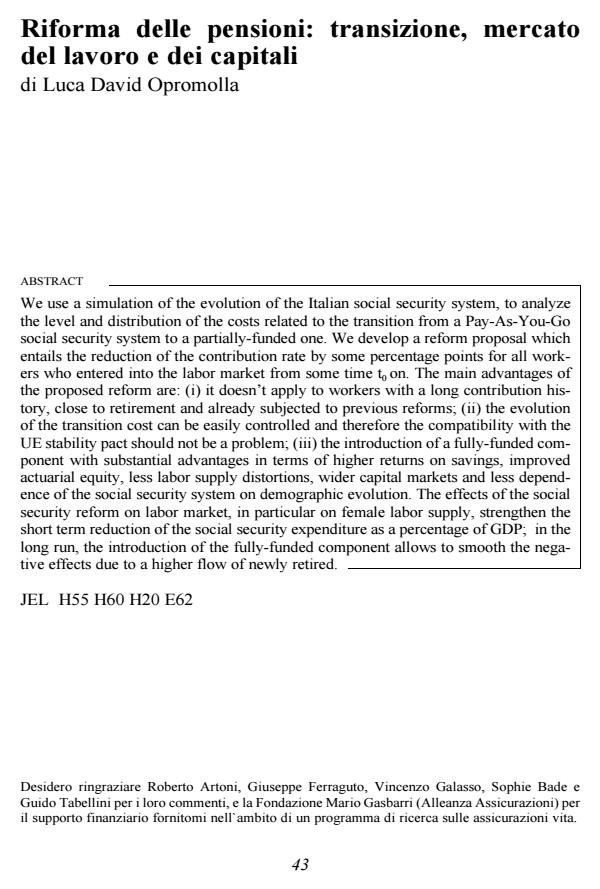Riforma delle pensioni: transizione, mercato del lavoro e dei capitali
Journal title ECONOMIA PUBBLICA
Author/s Luca David Opromolla
Publishing Year 2002 Issue 2002/5
Language Italian Pages 20 P. File size 171 KB
DOI
DOI is like a bar code for intellectual property: to have more infomation
click here
Below, you can see the article first page
If you want to buy this article in PDF format, you can do it, following the instructions to buy download credits

FrancoAngeli is member of Publishers International Linking Association, Inc (PILA), a not-for-profit association which run the CrossRef service enabling links to and from online scholarly content.
We use a simulation of the evolution of the Italian social security system, to analyze the level and distribution of the costs related to the transition from a Pay-As-You-Go social security system to a partially-funded one. We develop a reform proposal which entails the reduction of the contribution rate by some percentage points for all workers who entered into the labor market from some time t0 on. The main advantages of the proposed reform are: (i) it doesn’t apply to workers with a long contribution history, close to retirement and already subjected to previous reforms; (ii) the evolution of the transition cost can be easily controlled and therefore the compatibility with the UE stability pact should not be a problem; (iii) the introduction of a fully-funded component with substantial advantages in terms of higher returns on savings, improved actuarial equity, less labor supply distortions, wider capital markets and less dependence of the social security system on demographic evolution. The effects of the social security reform on labor market, in particular on female labor supply, strengthen the short term reduction of the social security expenditure as a percentage of GDP; in the long run, the introduction of the fully-funded component allows to smooth the negative effects due to a higher flow of newly retired. JEL H55 H60 H20 E62
Luca David Opromolla, Riforma delle pensioni: transizione, mercato del lavoro e dei capitali in "ECONOMIA PUBBLICA " 5/2002, pp , DOI: